These are incredibly intelligent buildings, some of the most intelligent buildings in the world. — Brigitte Peterhans, architect & resident
Few buildings in the world reflect the iconic nature of a city like 900 910 N Lake Shore embodies Chicago. Designed by German architect Ludwig Mies van der Rohe and built out of concrete, glass, aluminum and steel by Herbert Greenwald in 1955, the buildings are “giant mirrors for lake beauty.” The buildings showcase the refined high-rise residential design in the International Modernist style Mies helped define in Europe.

Ludwig Mies van der Rohe and Herbert Greenwald
Striking a visual harmony with nature from every angle, the modernist buildings appear almost floating between the cityscape and the expanse of Lake Michigan. The resident floors sit atop the entirely glass-enclosed lobbies—miniature showrooms for Mies’ famous Barcelona furniture with double book-matched Verdi marble—surrounded by a protective Colonnade that recedes seamlessly into the grass. This is paralleled by the raised sun deck “esplanade” that provides unobstructed views of the lake. In fact, the buildings were marketed as the Esplanade Apartments, which some residents still reference.

Model of 900 910 by Hedrich-Blessing Photographers
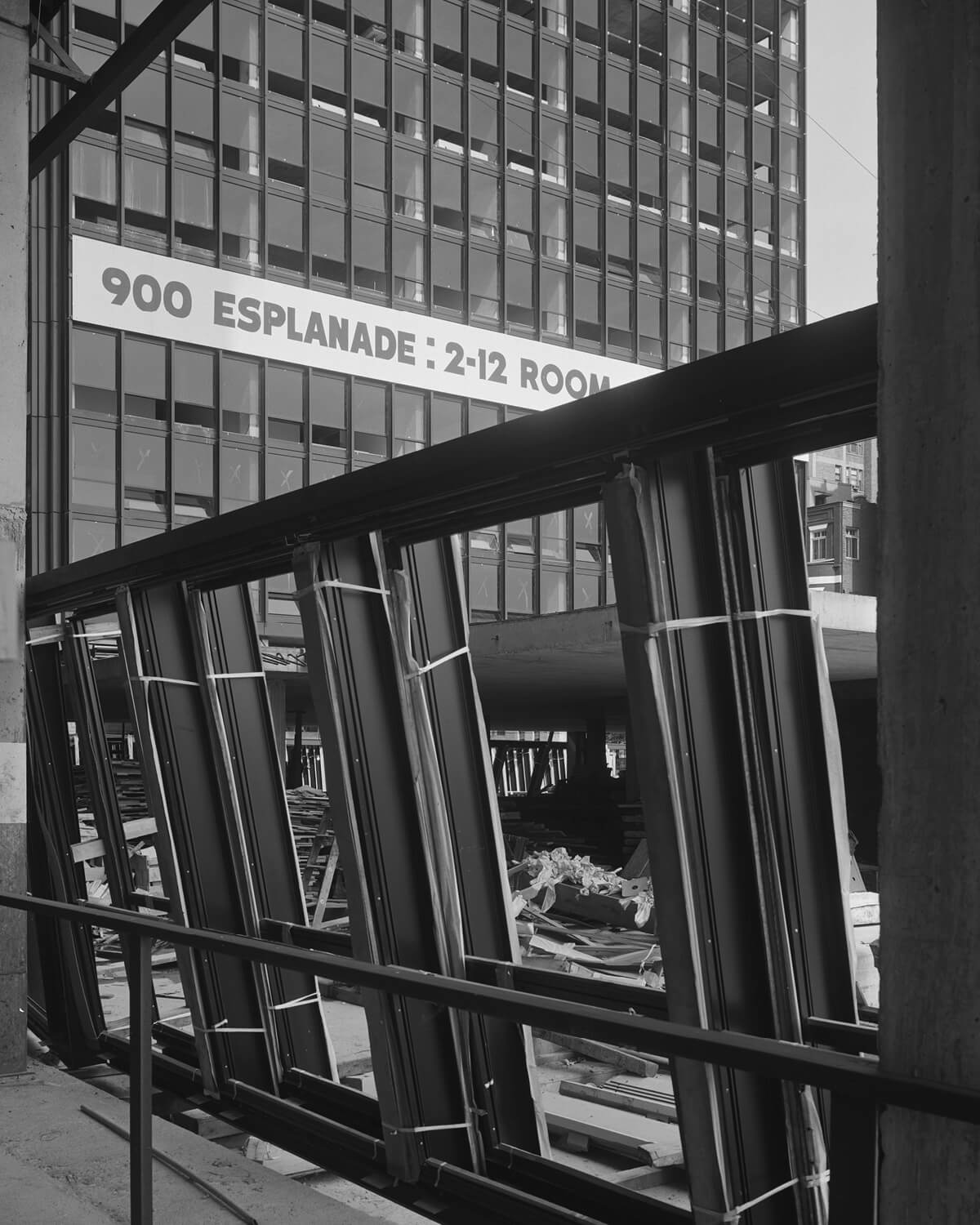
900 910 under construction by Hedrich-Blessing Photographers

900 910 under construction by Hedrich-Blessing Photographers
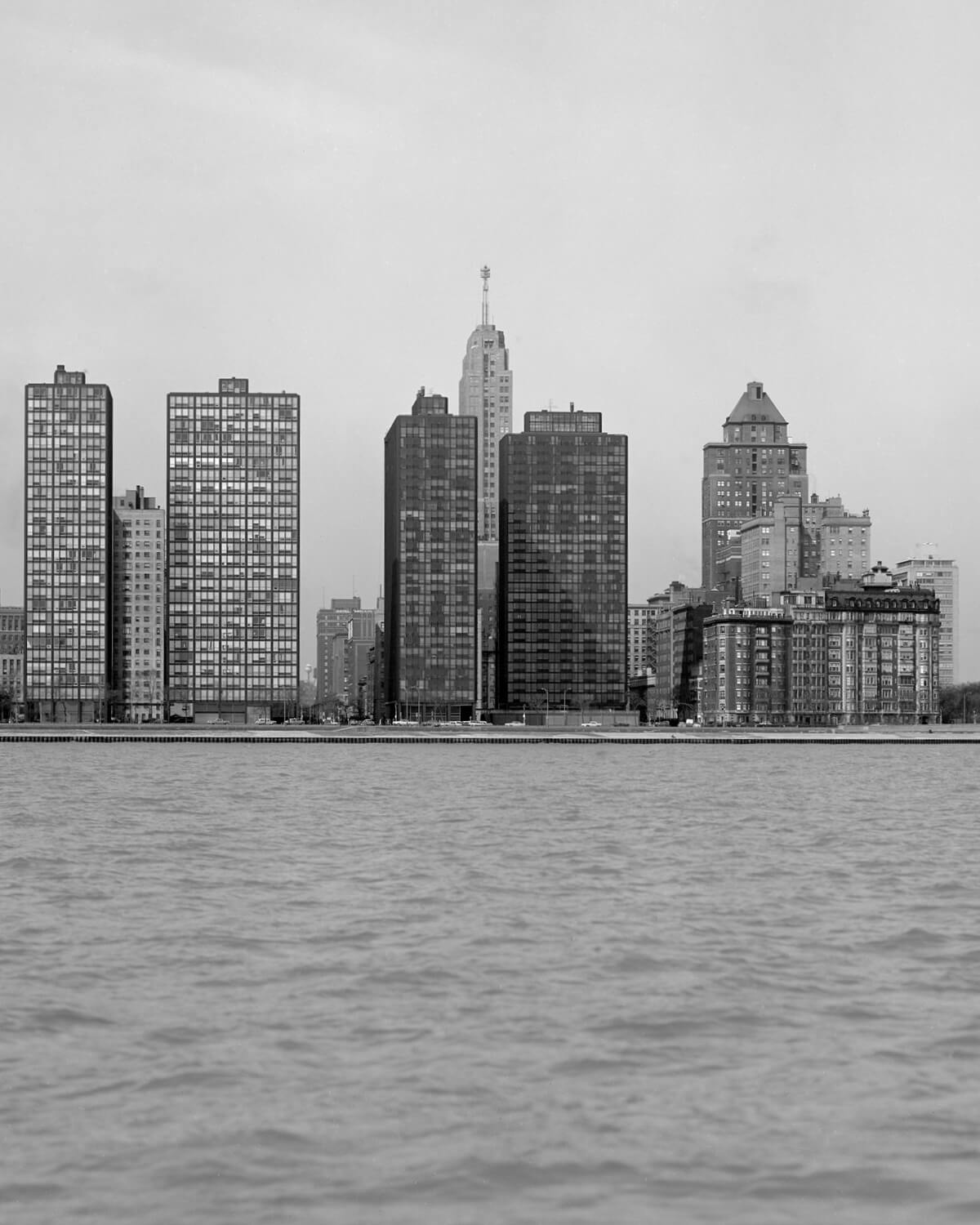
900 910 and 860 880 by Hedrich-Blessing Photographers
Nothing short of a masterpiece, architects credit 900 910 for its refined expression of several quintessential Miesian design elements that can be spotted in his other buildings around Chicago and the world. The most notable of these is the curtain wall, appearing as an uninterrupted sheet of glass, from which the nickname “glass houses” is derived. Mies perfected the curtain wall at 900 910 so that it stands apart from the buildings’ structural skeleton as a separate continuous element. This was implemented in all of the subsequent high-rise buildings Mies designed, including the famous Seagram Building in New York City.
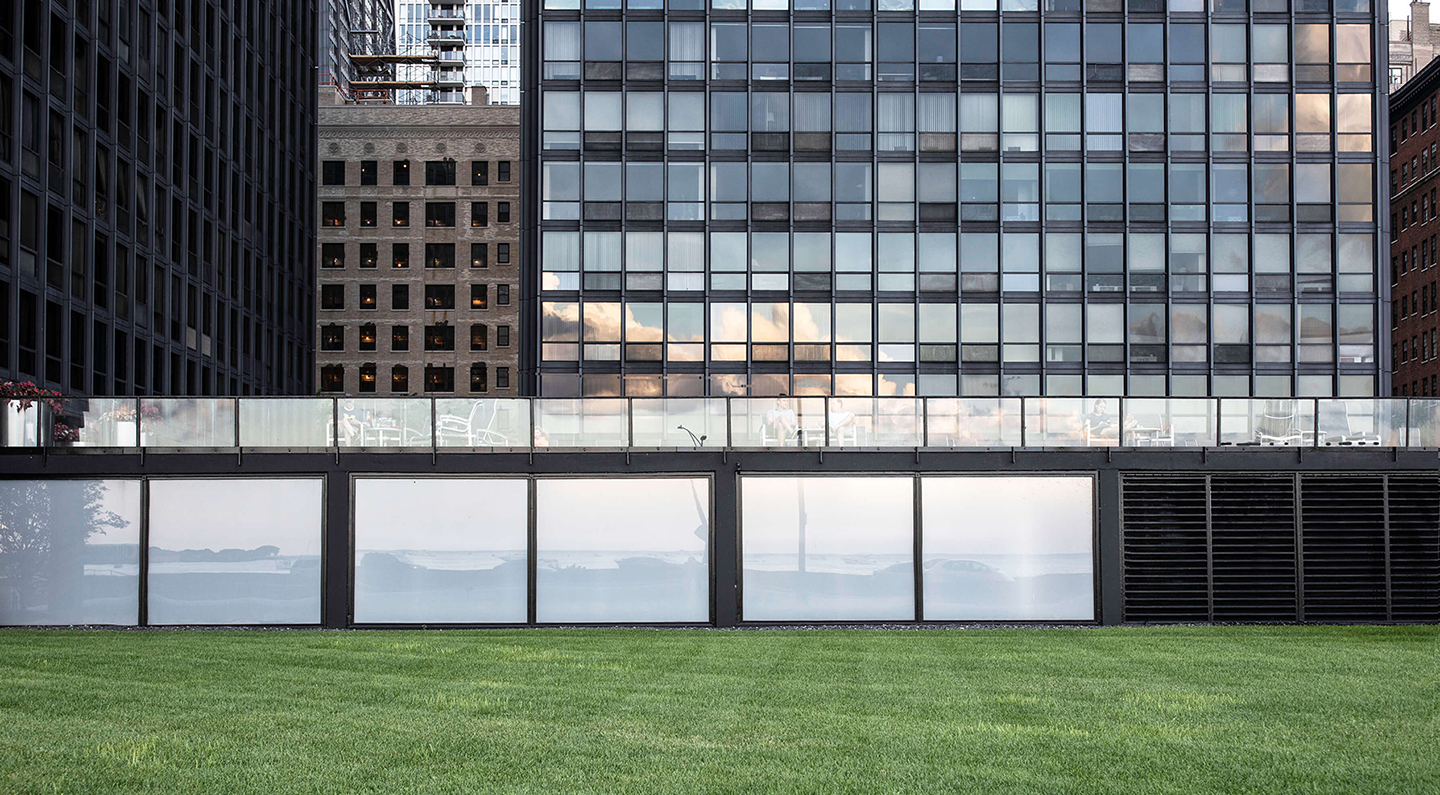
This aluminum and glass skin, or curtain wall, sits in front of and is independent of the concrete structure behind. This independence of structure and enclosure allows for the spacing and proportion of the window to be consistent across the facade.
The windows are “golden rectangles” the ratio of their divisions is derived from an ancient mathematical formula used throughout the centuries. — Margaret McCurry, FAIA architect and resident
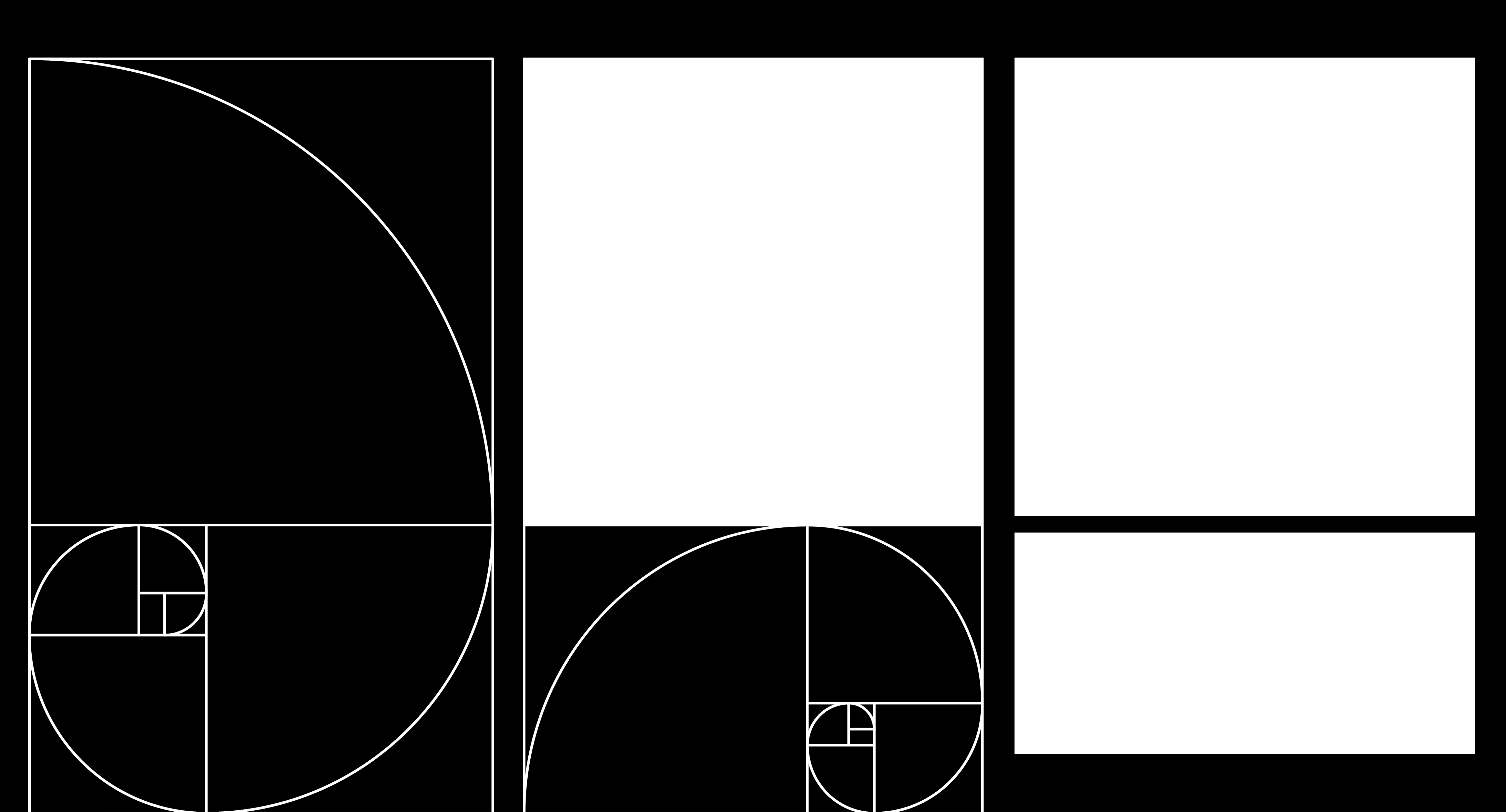
The 900 910 curtain wall windows are nominally 5′ wide by 8′ high, then are subdivided into 5′ wide x 3′ high sections to create the hopper windows. Both proportions are those of the “Golden Section” or “Golden Ratio”.
The Golden Section is a mathematical formula first found in the Ten Books on Architecture chronicled by Vitruvius, the Roman architect of the first century BC. This is a universally-accepted system for creating aesthetically pleasing proportions.
The Golden Section is defined by Phi, the number 1.618, named for the Greek sculptor Phidias. It refers to the ratio of the larger segment to the smaller segment or the length to width of rectangles.
Occupying premium real estate overlooking Lake Shore Drive and standing at 29 stories, 900 910 were the tallest concrete buildings in the city at the time they were constructed, and the first with a flat-slab concrete frame. It boasted one of the city’s first air cooling systems for a residential tower; and Chicago’s first large scale use of tinted, heat-absorbing glass.
Certainly, 900 910 is one of the boldest threads in Chicago’s architecture tapestry. Especially attractive to professionals in architecture and design, many of the buildings’ residents are committed to preserving Mies’ original intention, and documenting the buildings throughout various eras.
I revel in all the details. The shadow pattern rippling on the facade as I come down the lakefront. Mies said ‘God is in the details.’ When everything is thought-out there is a certain joy to that. — Nick Weingarten, architect and resident

Mies’ buildings were designed in what is best known as the International Style. Influenced heavily by several art movements popular in the midcentury, including the Russian Constructivists; architect Le Corbusier; another great Chicago architect, Frank Lloyd Wright; and the clean lines from the Dutch De Stijl group, Mies developed his own unique and recognizable style. He was known for exposing industrial material as fundamental to the overall aesthetic, speaking to both the pragmatism of his buildings and the austere yet airy quality they evoked. This eventually became recognized as Chicago Bauhaus. Having immigrated shortly after his brief stint as the final director of the German art school, he incorporated its ideologies yet did not identify his own style as “Bauhaus” per se. It is more accurate to say that the Bauhaus adopted Mies’ aesthetic, not the other way around.
The Bauhaus was an idea, and I believe that the cause of the gigantic influence that the Bauhaus has had in the world can be sought in the fact that it was an idea. — Ludwig Mies van der Rohe
It was not happenstance that Chicago became home to the most comprehensive collection of Mies’ life’s work. He immigrated in 1938 at a critical juncture in his career. At age 52, he was a maturing architect representing the burgeoning Modernist movement. Meanwhile, Europe was in the throes of political and social upheaval and Germany no longer hospitable to visionary artists or independent thinkers. Chicago was hungry for a revolutionary new voice, and IIT (then the Armour School) offered Mies a not-to-be-missed opportunity to not only head the school of architecture, but also design the campus–all while retaining the flexibility to run his own professional practice.
The IIT campus is a sprawling museum of twenty Mies academic building designs, the most famous being S.R. Crown Hall and his first and only religious building, the “God Box” Carr Chapel. Mies was Dean of the School of Architecture from 1939 to 1958.
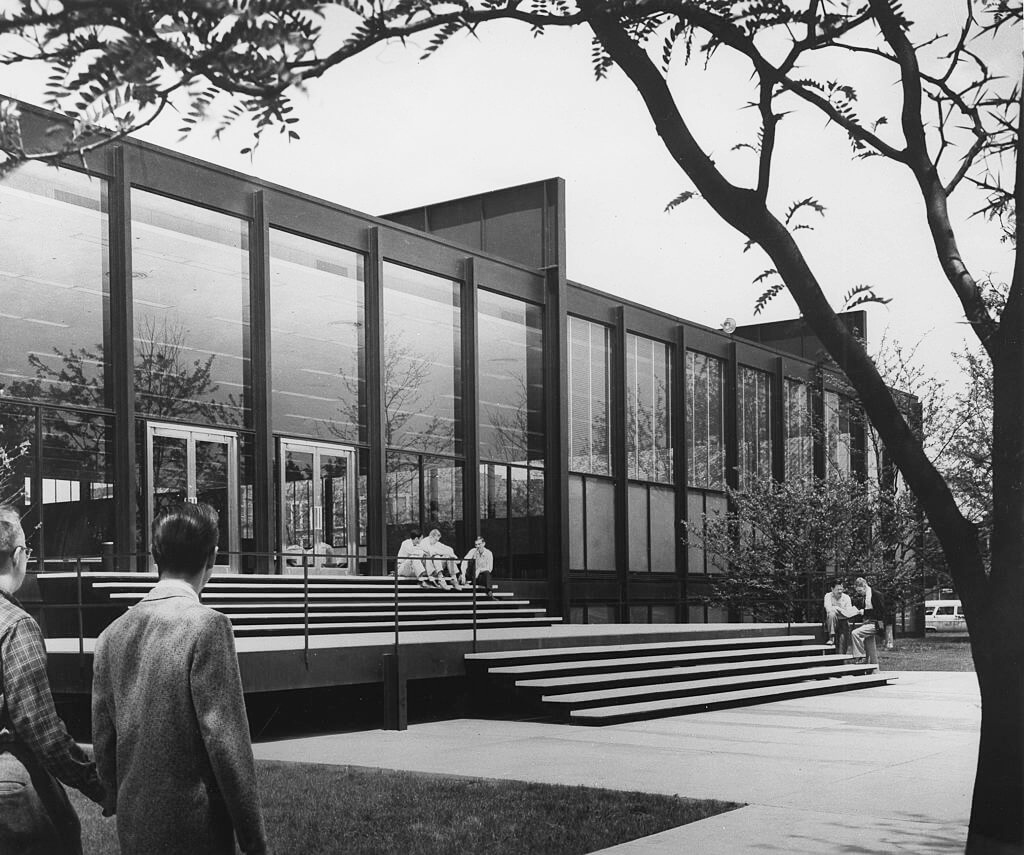
S.R. Crown Hall at the Illinois University of Technology, 1960s
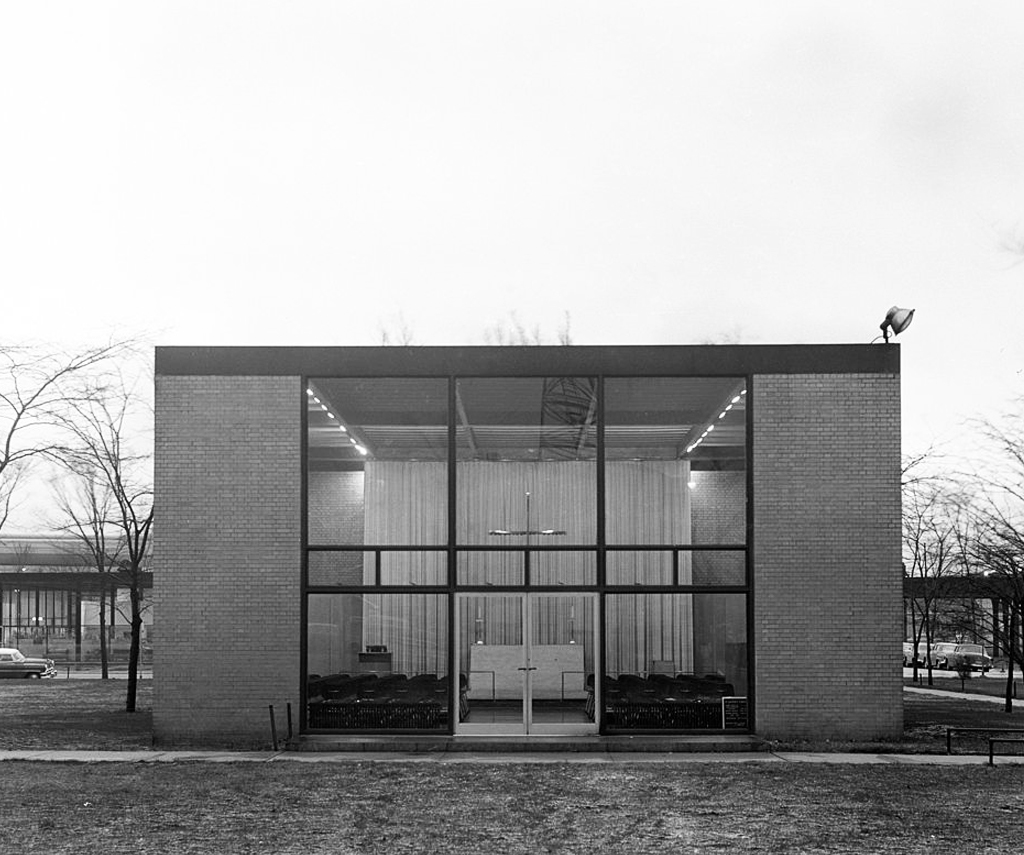
“God Box” Robert F. Carr Memorial Chapel of Saint Savior, 1956
During the most critical era of his career as Dean and directly afterward, Mies left his mark permanently on the experience and aesthetic of Chicago. The loop is home to One IBM Plaza—converted to the Langham Hotel in 2013—on the Chicago River and the famous Chicago Federal Center municipal building. Additionally, The Farnsworth House and Robert H. McCormick House, designed between 1949 and 52, became experiments in situating Mies’ residential designs more fully in nature outside the city. Similar to the Barcelona Pavilion and elsewhere abroad, Mies’ Chicago buildings and homes have become landmarks for continual artistic interpretation and expression—evolving over time into treasured public spaces.
Create form out of the nature of the task with the means of our time. This is our work. — Ludwig Mies van der Rohe

Particularly unique to Chicago were Mies’ high-rise residential buildings, of which 900 910 is considered to be the most perfectly realized. The buildings are among several Mies high-rise residential sites that dot the lakeshore from Hyde Park to Lakeview. Located twenty-one feet southeast and also constructed on a twenty-one-foot grid, is 860 880 North Lake Shore. Built three years previously, 860 880 was Mies and Greenwald’s second residential high-rise. Here, Mies prototyped several design concepts that he was able to take forward with advanced technology and engineering at 900 910. Though the four towers have the appearance of a collection, some architects have noted that 900 910 has more in common with other Mies high-rises, notably, the Commonwealth Apartments on Diversey Parkway.
Today, 900 910 is as relevant as when it was first conceived. Stable, yet flexible. Iconic, yet open to interpretation. A haven amid nature and the city. Living modernism.
Additional Resources
Books
“Mies van der Rohe” A Critical Biography, New and Revised Edition by Franz Schulze and Edward Windhorst
“Mies” by Detlef Mertins
“Mies in America” by Phyllis Lambert
“Ludwig Mies van der Rohe: Complete Writings 1922–1969” edited by Vittorio Pizzigoni and Michelangelo Sabatino
Oral Histories & Interviews
Wikipedia
Other
